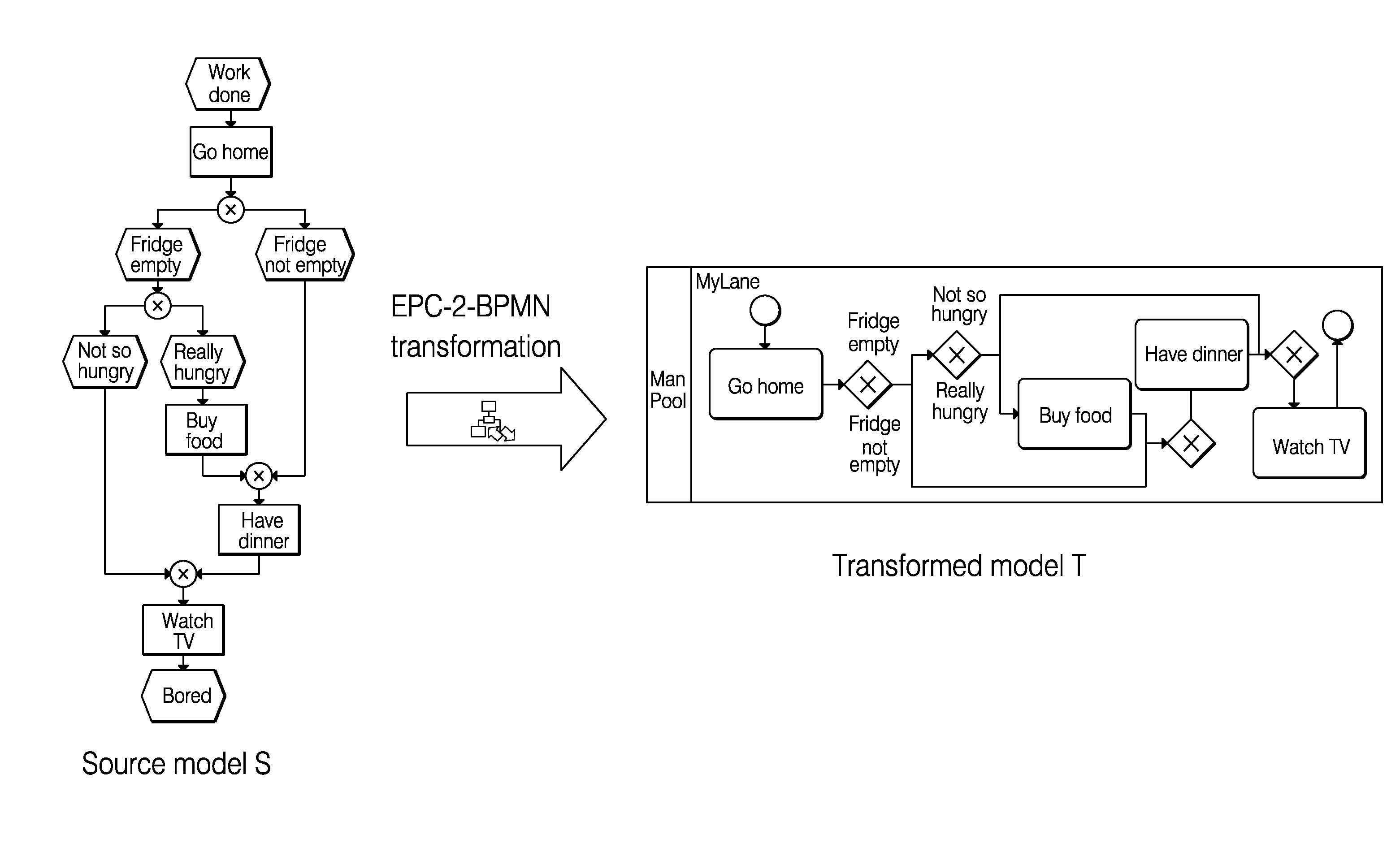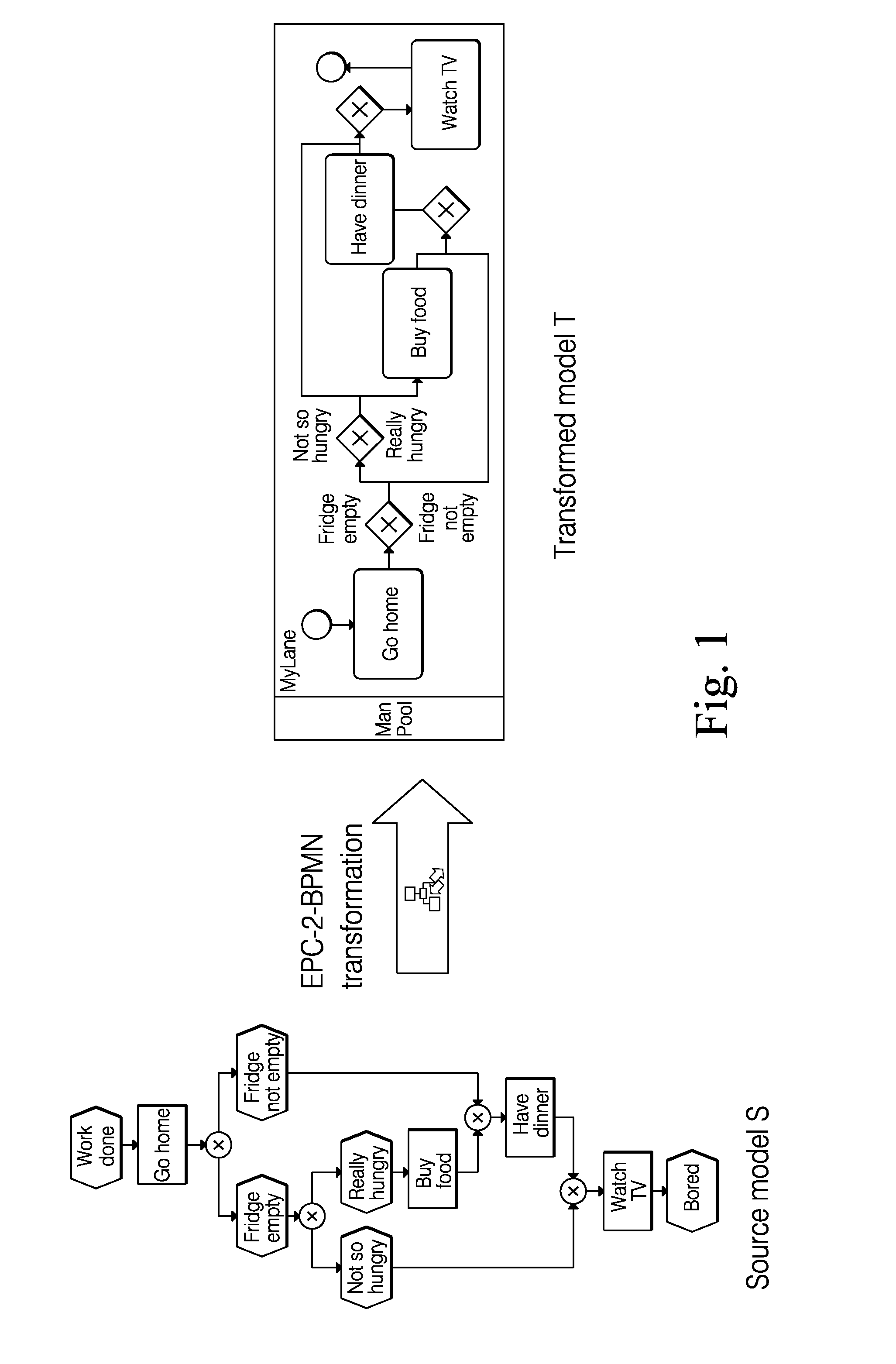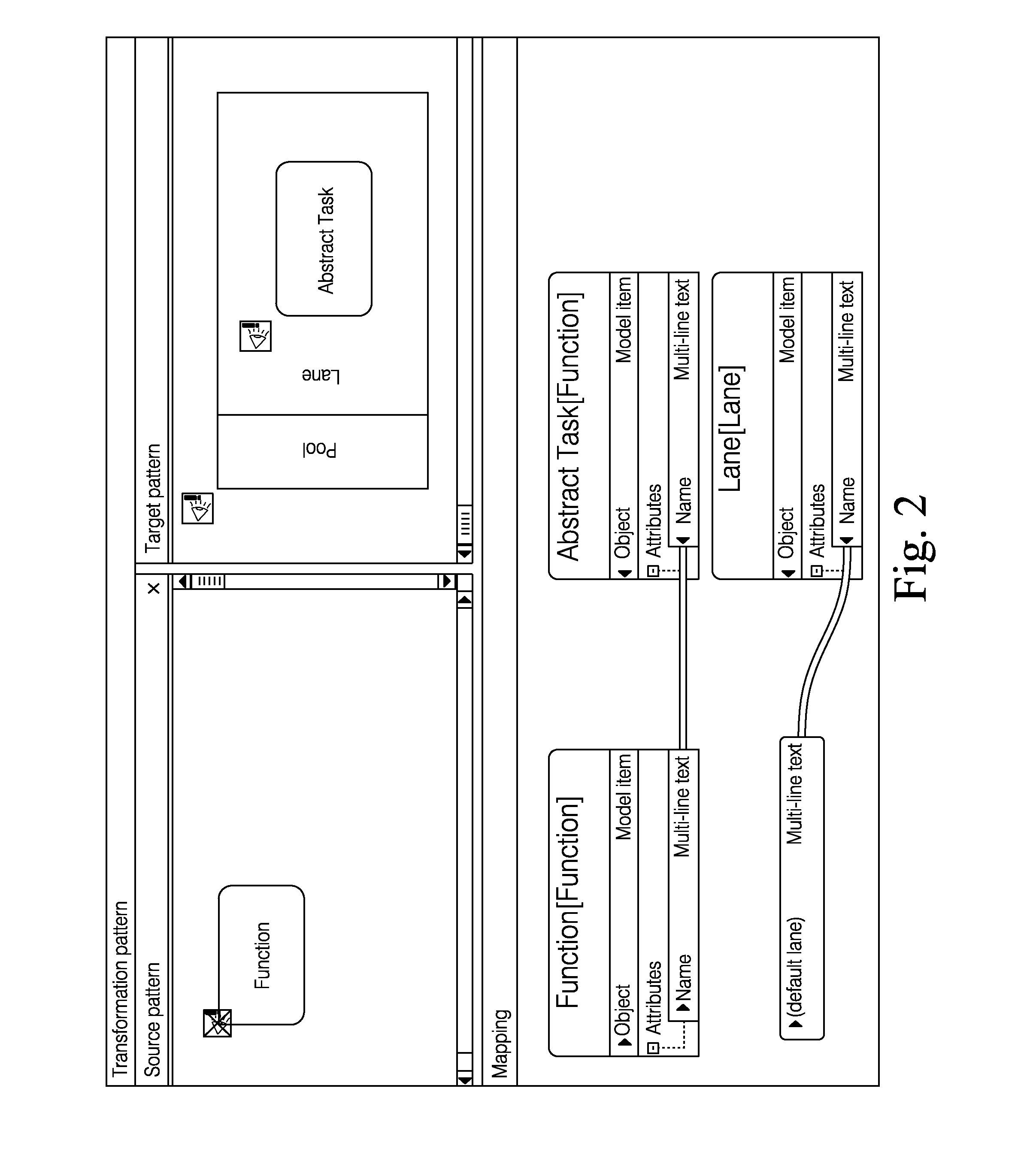Selective change propagation techniques for supporting partial roundtrips in model-to-model transformations
a technology of model-to-model transformation and propagation technique, which is applied in the field of selective change propagation technique for supporting partial roundtrips in model-to-model transformation, can solve the problems of difficult and cumbersome work directly with these representations, the most textual representations are ill-suited for human direct use, and the merging of models is not natural tools. solve the problem of merge conflicts, and the resolution of conflicts is easy and fast, so as to achieve the effect of convenient and convenient conflict resolution
- Summary
- Abstract
- Description
- Claims
- Application Information
AI Technical Summary
Benefits of technology
Problems solved by technology
Method used
Image
Examples
Embodiment Construction
[0113]In some cases, it would be desirable to generate a technical process description (e.g., given as a BPMN or other model) from a business-oriented process description (e.g., given as an EPC or other model). This may in certain instances be implemented in connection with a model transformation framework (e.g., the ARTS model transformation framework) that allows for declaratively specifying the rules regarding how to translate models of one type into semantically equivalent models of another type.
[0114]Once the initial BPMN or other technical process description has been created by transforming the EPC or other business-oriented process description with a suitable EPC-2-BPMN or other transformation, both business-oriented process description and the technical process description may be changed independently of one another other. With the help of the interactive merge, it is possible to transform the modified business-oriented process description again and merge it with the change...
PUM
 Login to View More
Login to View More Abstract
Description
Claims
Application Information
 Login to View More
Login to View More - R&D
- Intellectual Property
- Life Sciences
- Materials
- Tech Scout
- Unparalleled Data Quality
- Higher Quality Content
- 60% Fewer Hallucinations
Browse by: Latest US Patents, China's latest patents, Technical Efficacy Thesaurus, Application Domain, Technology Topic, Popular Technical Reports.
© 2025 PatSnap. All rights reserved.Legal|Privacy policy|Modern Slavery Act Transparency Statement|Sitemap|About US| Contact US: help@patsnap.com



